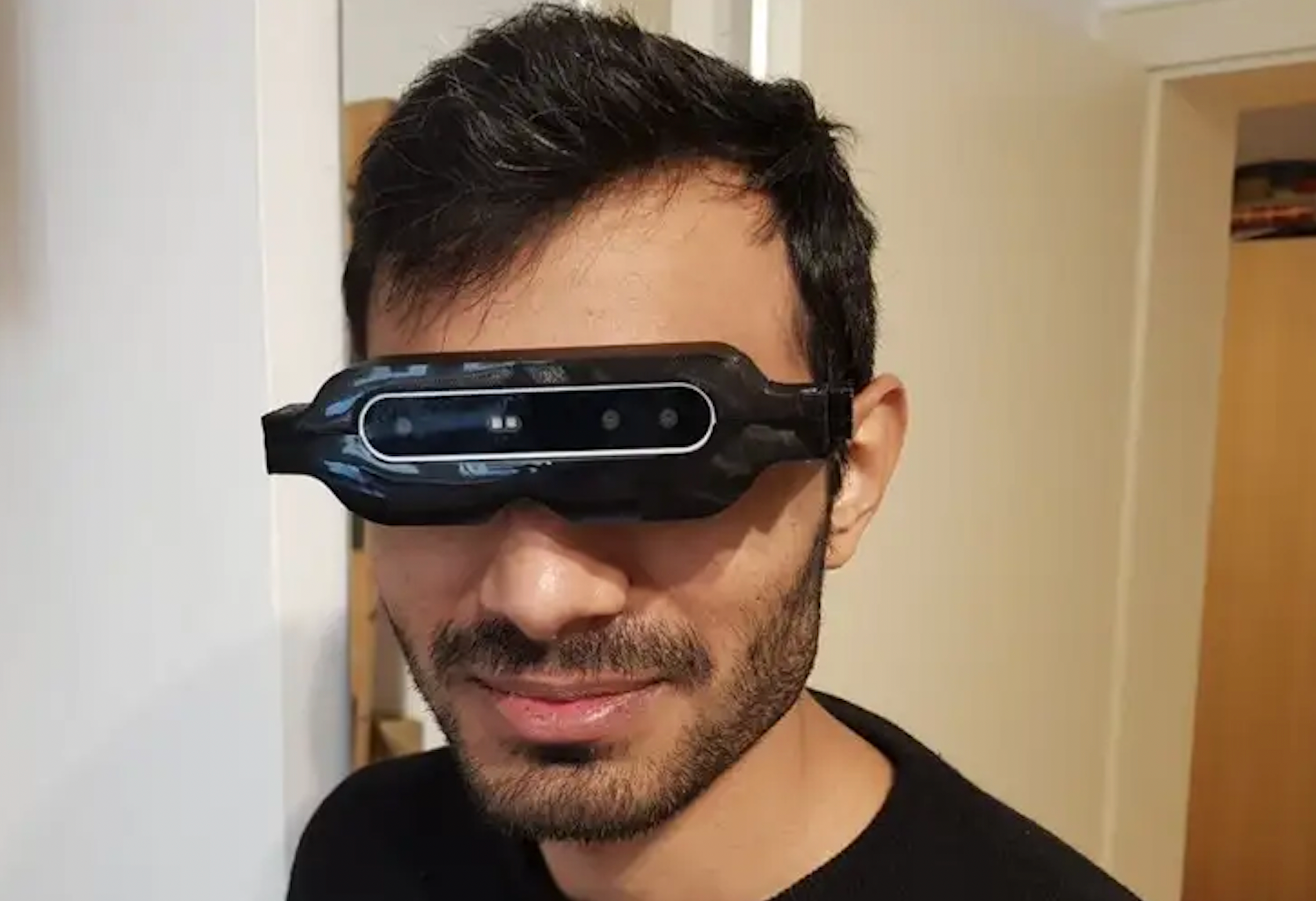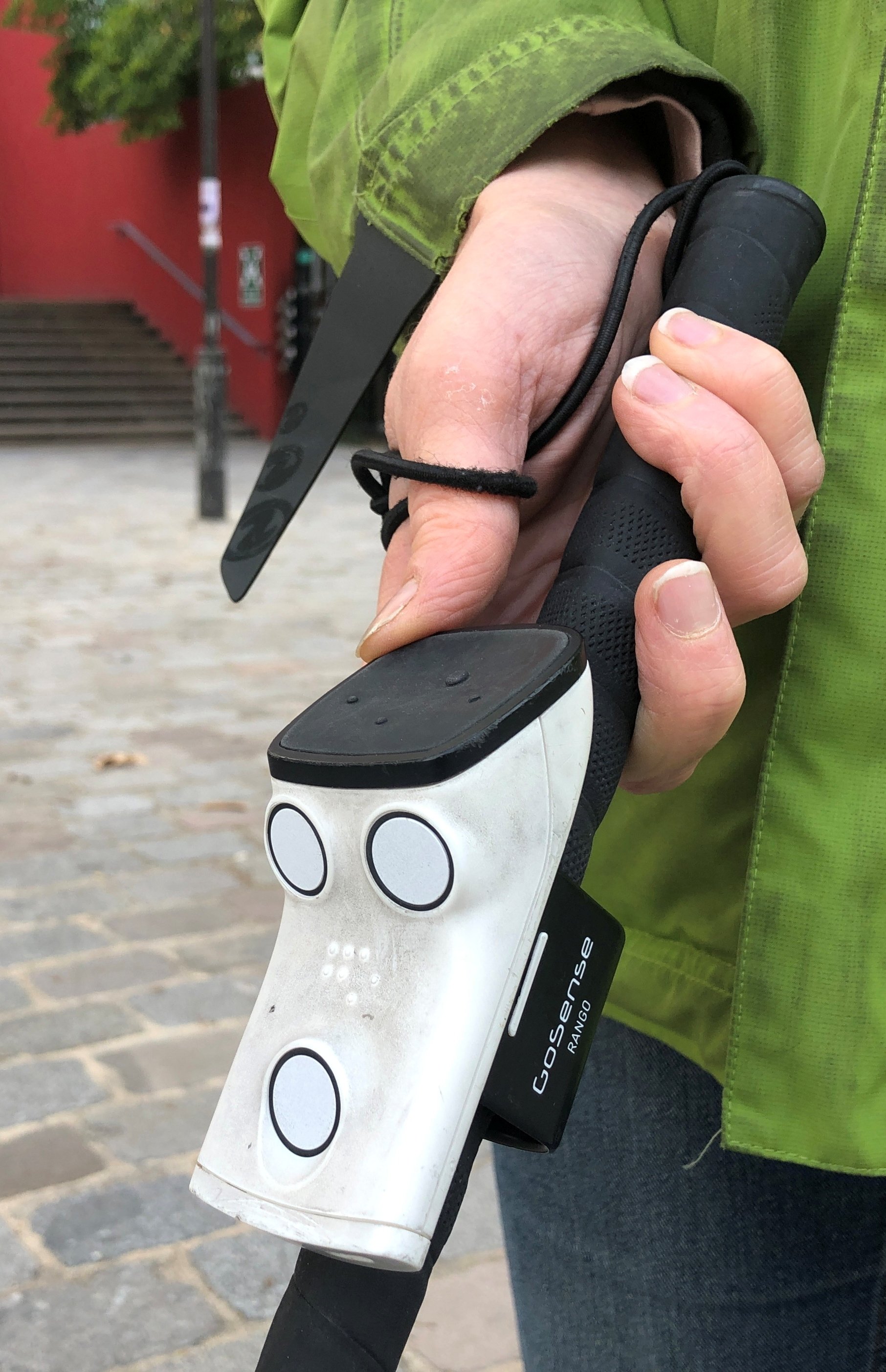Braille Displays and Notetakers: Essential Tools for Learning and Work
Braille Displays and Notetakers: Essential Tools for Learning and Work
Blog Article
Discover Innovative Devices Made for the Aesthetically Impaired
The development of innovative tools for the aesthetically damaged represents a significant development in accessibility and independence. Technologies such as wise glasses with AI capacities and mobile applications made to give acoustic descriptions are reshaping daily experiences for customers. In addition, wearable tools that employ haptic comments enhance environmental recognition, while contemporary Braille developments provide brand-new methods to involve with message. As these tools remain to evolve, their impact on the lives of those with visual problems raises essential concerns concerning the future of inclusivity and freedom in various aspects of life. What exists in advance in this technical landscape?
Smart Glasses for Navigating

Smart glasses made for navigation are reinventing the means visually damaged individuals interact with their setting. These sophisticated gadgets use a combination of video camera modern technology, expert system, and auditory comments to provide real-time details about environments. By employing barrier discovery systems, wise glasses can alert individuals to potential hazards, enabling much safer wheelchair in both unfamiliar and familiar setups.
The assimilation of GPS modern technology further improves navigating capabilities, enabling individuals to get auditory directions as they relocate. This hands-free technique not only cultivates independence but likewise empowers visually damaged individuals to navigate urban landscapes with enhanced confidence. In addition, lots of clever glasses are furnished with attributes that identify sites and road indicators, providing contextual information that enhances the customer experience.
Additionally, the advancement of these tools is continuously advancing, with companies working to improve the precision of things acknowledgment and increase the variety of navigational attributes. As smart glasses end up being more economical and easily accessible, they hold the possible to significantly transform every day life for visually damaged users. Ultimately, these ingenious devices represent a vital step towards inclusivity, offering boosted movement and a greater sense of freedom for people navigating the globe around them.

Mobile Apps for Daily Living
Just how can mobile applications enhance the every day lives of aesthetically impaired people? Mobile applications are transforming the means aesthetically damaged users navigate their settings, handle everyday tasks, and access details. These applications supply crucial support via different performances, fostering self-reliance and improving lifestyle.
Several innovative mobile applications are created specifically for everyday living. Apps like Be My Eyes link aesthetically damaged users with sighted volunteers via video telephone calls, enabling them to receive real-time help with tasks such as reading labels or browsing strange spaces. Likewise, Seeing AI, established by Microsoft, uses man-made intelligence to describe surroundings, read text, and identify items, properly transforming a mobile phone into a powerful device for everyday help.
Additionally, navigation applications customized for the aesthetically impaired, such as Aira and BlindSquare, offer audio-based instructions and ecological details, enabling users to traverse their surroundings safely and confidently. Beyond navigation and prompt help, mobile applications likewise sustain organization and job management, with attributes that aid customers establish reminders, develop to-do listings, and track consultations. In summary, mobile applications act as important resources, encouraging visually damaged individuals to lead more independent and meeting lives.
Wearable Technologies for Support
Empowerment with modern technology is significantly obvious in the world of wearable gadgets created to assist visually impaired individuals. These ingenious tools incorporate perfectly right into daily life, enhancing navigation and providing crucial feedback to individuals. Clever glasses outfitted with cams can acknowledge faces and read message aloud, enabling customers to engage more confidently in expert and social settings.
One more notable development is the usage of haptic responses systems in wearable gadgets. These systems make use of vibrations or various other tactile signals to communicate information concerning the user's environment, such as barriers or adjustments in surface, improving mobility and safety and security. Wearable technologies also consist of wristbands that attach to smartphones, signaling users to notices through subtle resonances, thus enhancing connectivity without reliance on visual cues.
As these modern technologies continue to evolve, they are not only enhancing self-reliance for aesthetically damaged people however likewise promoting a higher feeling of inclusion in culture. By bridging the void in between challenges encountered in day-to-day living and the potential for freedom, wearable innovations act as essential tools in the mission for equality and empowerment for those with visual problems.
Sound Description Tools
Sound description tools play a critical duty in improving ease of access for aesthetically damaged individuals, giving them with the ability to engage with aesthetic media. Smart glasses for the visually impaired. These devices supply narrated summaries of essential aesthetic components in movies, television programs, and live performances, making sure that customers can totally understand the context and feelings conveyed via visuals
Sound description can be incorporated right into various platforms, consisting of streaming solutions, movie theater screenings, and live movie theater. Lots of prominent streaming solutions now include audio description as an accessibility function, permitting visitors to pick it conveniently. In enhancement to conventional media, specialized applications likewise exist, offering audio descriptions for art exhibitions, museums, and various other social occasions.
The performance of audio summary rests on the ability of the storytellers, that should communicate visual information succinctly without interfering with the original audio. Developments in this field are also leading the way for even more personalized experiences, where customers can readjust the degree of information and pacing according to their choices.
Braille Innovations and Gadgets
Braille gadgets and innovations have actually significantly changed the way aesthetically damaged people engage with message and information. Modern improvements have actually led to the development of flexible tools that boost literacy and self-reliance amongst users. Significantly, Braille present modern technologies have actually progressed, permitting dynamic analysis experiences. These devices transform electronic text into Braille, enabling individuals to access a vast selection of information on tablets, computer systems, and smartphones.
Moreover, mobile Braille notetakers integrate conventional Braille input with contemporary capabilities, assisting in note-taking, organizing, and record editing and enhancing on the go. OCR devices for the blind. These portable gadgets typically include text-to-speech abilities, bridging the space between Braille and acoustic details
Additionally, innovative Braille printers have emerged, allowing individuals to produce Braille labels, papers, and instructional products efficiently. This availability promotes greater engagement in specialist and instructional environments, ultimately advertising inclusivity.
In addition, research study into wise Braille innovations remains to Go Here broaden. Instruments that incorporate expert system are being explored to give real-time navigation aid and contextual information, improving the individual experience in varied setups. On the whole, these advancements show a dedication to encouraging aesthetically damaged people with innovation, ensuring they can conveniently accessibility and engage with the globe around them.

Conclusion
The development of cutting-edge devices for the aesthetically damaged considerably improves independence and quality of life. Smart glasses, mobile applications, wearable technologies, audio description tools, and Braille developments collectively empower people by offering important navigation support, environmental understanding, and boosted analysis experiences. These modern technologies not only foster higher incorporation however likewise promote autonomy in daily tasks, inevitably adding to a more accessible and fair culture for aesthetically impaired individuals. Proceeded development in this area holds assurance for further enhancements.
As wise glasses come to be much more budget-friendly and available, they hold the prospective to considerably transform daily life for aesthetically damaged individuals. Mobile apps are transforming the way visually impaired customers browse their why not try these out atmospheres, take care of everyday tasks, and accessibility info. Applications like Be My Eyes attach aesthetically damaged individuals with sighted click over here volunteers via video clip telephone calls, enabling them to obtain real-time help with tasks such as checking out tags or navigating unfamiliar rooms.In addition, navigating applications customized for the visually impaired, such as Aira and BlindSquare, offer audio-based instructions and environmental info, enabling users to traverse their surroundings safely and with confidence.The advancement of cutting-edge devices for the aesthetically damaged considerably boosts self-reliance and quality of life.
Report this page